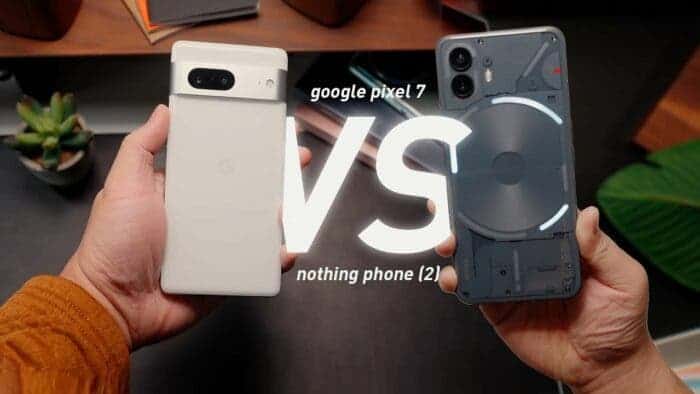Nothing recently introduced its second smartphone as a company. Similar to its predecessor, the Nothing Phone (2) boasts a unique design distinct from other phone brands. Speaking of design, the Nothing Phone (2) features a very similar design to the previous model. External similarities aside, the Nothing Phone (2) is a step further in almost every other department if compared to the Nothing Phone (1). Even though the Phone (2) features last year’s Snapdragon 8+ Gen 1 processor, the device still stands tall as a real premium device.
Nothing has also increased the price of this year’s model from $399 to $599 due to the upgrades that come with it. With the same budget, you can also consider purchasing the Google Pixel 7 smartphone. This leads us to the question of “which one is worth your $599?” It is worth noting that both phones are very good phones which are definitely worth the prices. However, they both come with their own differences which should help the buyer make informed decision before buying.
This article explores five significant differences between the Nothing Phone (2) and the Google Pixel 7. These differences highlight the hardware, software as well as design of both phones.
Design (Nothing Phone (2) Vs Google Pixel 7) 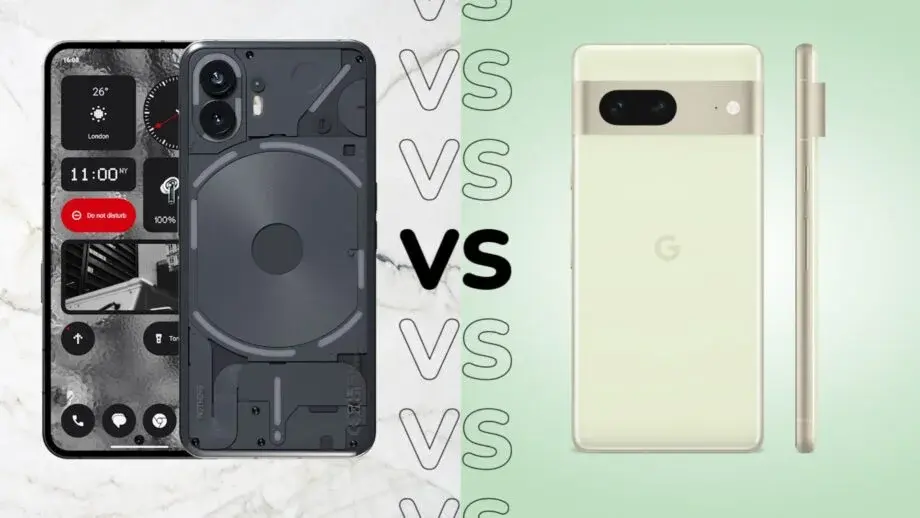
A distinguishing factor of the Nothing Phone (2) compared to other phones, including its predecessor, the Phone (1), is because of its Glyph Interface. This interface consists of white lights that are built into the clear back of the smartphone.
The Glyph Interface on the Nothing Phone 2 is not just for looks. It serves practical purposes too. When you receive notifications or calls, the interface provides visual cues. Additionally, it functions as a light source for taking photos in low-light settings. The Phone 2 goes even further by including more LEDs, which enable more advanced light effects. Now, the interface can show things like timers, volume levels, and even updates for apps like Uber and Deliveroo.
In contrast, the Pixel 7 maintains the visual style of previous Pixel models, including a prominent block on the back that houses two cameras. The phone features a premium combination of steel and glass materials and offers a range of colorful options, unlike the limited grey and white choices of the Nothing Phone 2. However, it lacks the lighting feature found in the Nothing Phone (2).
Android OS User Interface (Nothing Phone (2) Vs Google Pixel 7) 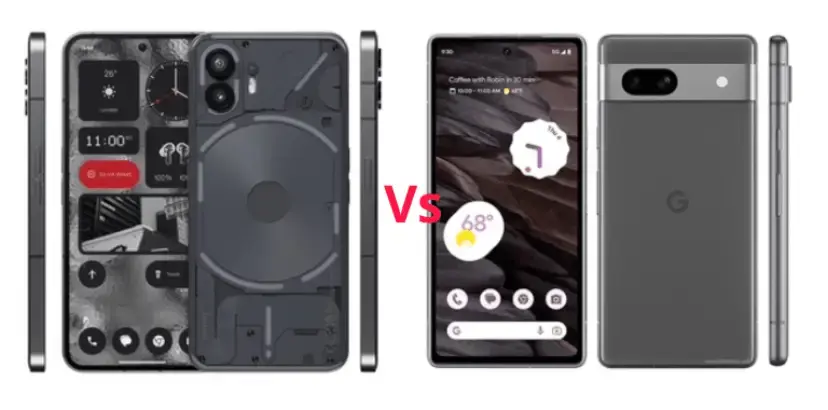
The Google Pixel range is widely praised for its pure version of Android, and the Google Pixel 7 continues that tradition with its vanilla interpretation of Android 13. It includes support for Material You, which means your wallpaper can seamlessly match the overall user interface. The phone also retains other stock Android features and keeps bloatware to a minimum.
In contrast, the Nothing Phone 2 uses a completely different operating system called Nothing OS 2.0. This operating system has a distinct design aesthetic with dot-matrix style icons and text. It emphasizes a monochromatic color scheme, mainly consisting of whites, greys, and blacks. The visual style of Nothing OS 2.0 sets it apart from other operating systems.
It certainly looks visually appealing, and Nothing has managed to integrate support for all apps (regardless of whether they officially support the skin) within its Nothing iconography. That’s a refreshing change compared to other skins that tweak the look of app icons, with there usually being exceptions to the rule in your app list.
Gizchina News of the week
AI Capabilities (Nothing Phone (2) Vs Google Pixel 7) 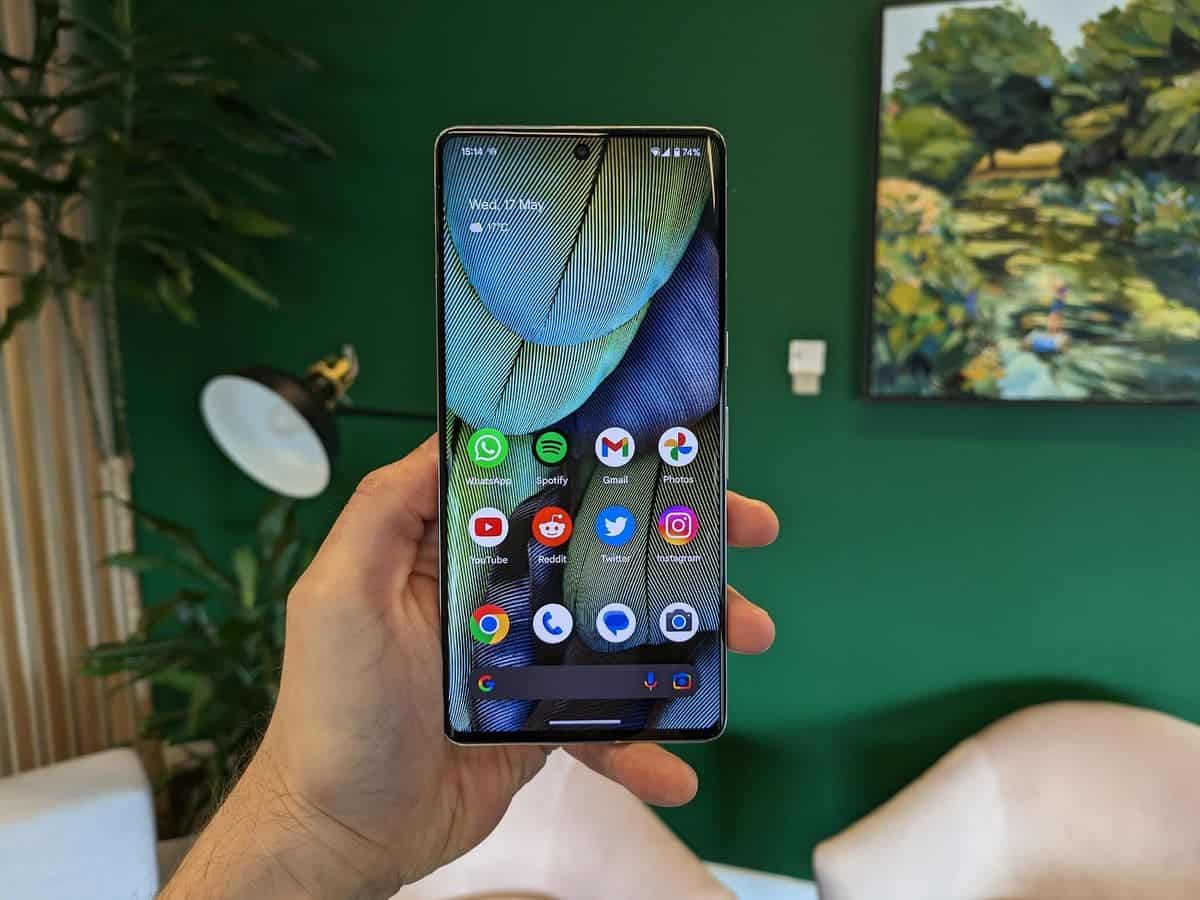
The Google Pixel 7 runs on Google’s own Tensor G2 chipset, which differs from the Snapdragon 8 Plus Gen 1 used in the Nothing Phone 2. Unlike focusing solely on performance, the Tensor G2 chipset prioritizes AI capabilities. This emphasis on AI enables the Pixel 7 to perform some impressive and innovative functions.
The Pixel 7 incorporates AI-powered features that enhance the user experience. These features include Google Assistant’s ability to screen calls from unknown or spam numbers, as well as its capability to identify and save music playing in your surroundings. The Pixel 7’s camera benefits from AI processing, resulting in impressive photo quality. Additionally, advanced editing tools like Magic Eraser and Magic Unblur are available, further enhancing the phone’s photography capabilities.
The Pixel 7 is highly regarded for its exceptional voice-to-text recognition, as mentioned by our reviewer. It offers one of the best experiences in accurately transcribing spoken words into text. Additionally, the phone provides on-device translation capabilities, allowing you to easily translate languages without relying on an internet connection. If these features align with your preferences, the Pixel 7 is a great choice.
If raw power is your main priority, then the Nothing Phone 2 with its Snapdragon processor would likely be the better choice. Although we don’t have specific benchmarks for the Nothing Phone 2, other phones equipped with the Snapdragon 8 Plus Gen 1, such as the Motorola Razr 40 Ultra, have demonstrated impressive CPU and GPU performance. If you prioritize performance above other features, the Nothing Phone 2 might be the more suitable option for you.
Zoom Capabilities (Nothing Phone (2) Vs Google Pixel 7) 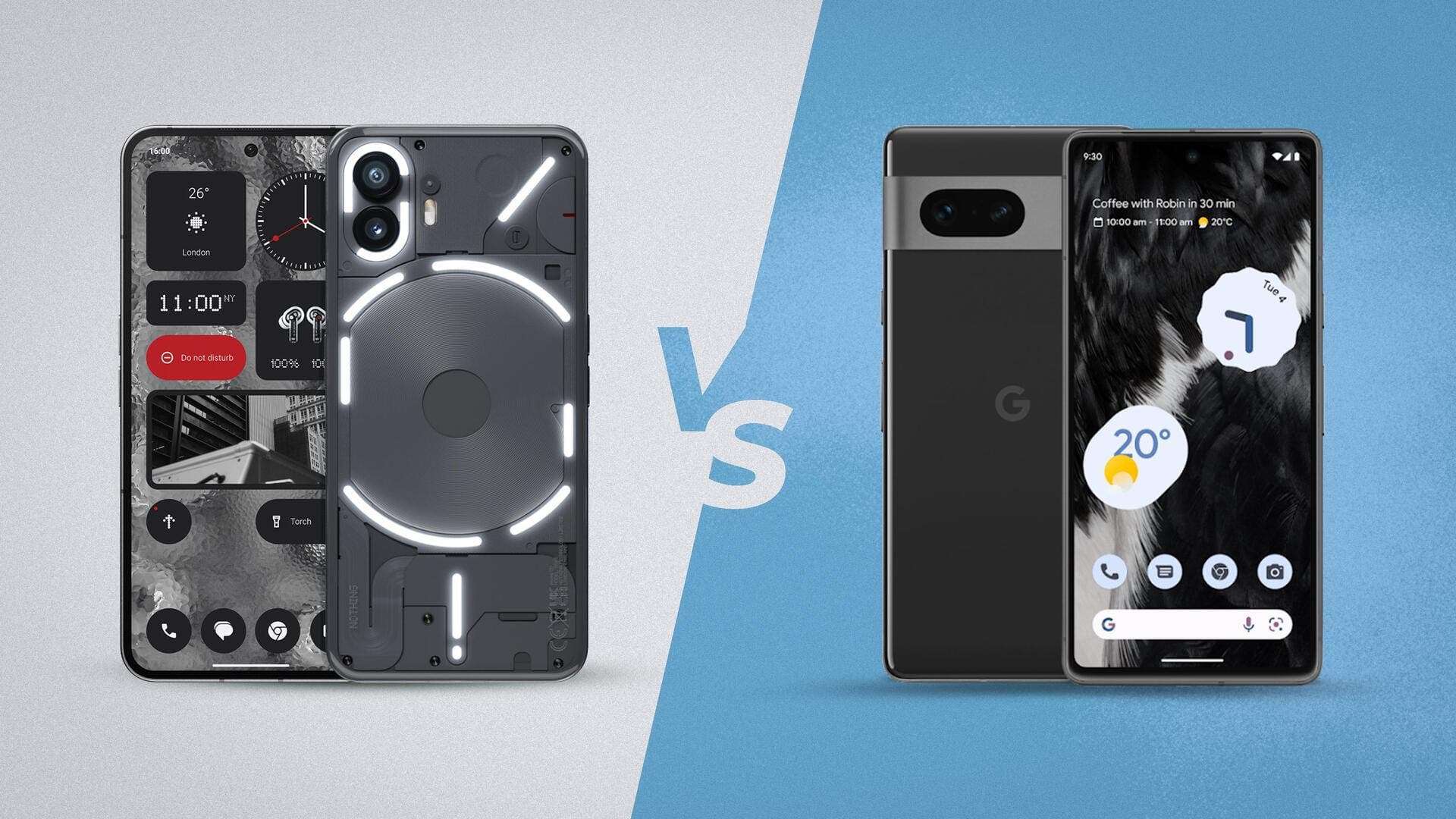
Both the Nothing Phone 2 and Google Pixel 7 have similar main camera setups, at least in terms of megapixels on paper. They both feature a 50MP primary camera. However, the Nothing Phone 2 takes the lead in megapixels with its matching 50MP ultrawide camera, while the Pixel 7 offers a 13MP ultrawide option. Neither of these phones includes a dedicated telephoto lens, but this may not be a significant factor for the Pixel 7.
The Pixel 7 lags a bit behind here in terms of zoom capabilities. The AI-powered Super Res Zoom feature tries to produce a clearer shot at 8x which is the maximum zoom. However, the end product does not seem to be very useful. On the other hand, the Nothing Phone 2 has a maximum digital zoom of 10x, which is two steps ahead of the Pixel 7’s capabilities. If zooming is important to you, you may find yourslef leaning a bit towards the Nothing Phone (2).
The Pixel 7’s camera performance goes beyond just zooming capabilities. Images captured by its other sensors are considered to be among the best available. According to our reviewer, the image quality can be “jaw-droppingly good.” While the camera system of the Nothing Phone 2 has yet to be tested, it appears that it will face a tough challenge in matching the exceptional image quality of the Pixel 7.
Price in the UK
The fact that both phones come with the same price tag of $599 does not mean the story is the same in every parts of the world. Both phones may have the same price tag in the US, however, prices change a bit when you move to the UK market. While the Nothing Phone (2) sells for £579 in the UK, the Google Pixel 7 sells for £599 within the same region. This makes the Nothing Phone (2) a bit cheaper in the UK as compared to the Google Pixel 7.
Those in the UK may get to save £20 if they decide to go for the Nothing Phone (2) instead of the Google Pixel 7.
Conclusion
As listed above, the differences are quite clear. However, it is worth noting that these differences do not really make one phone a better choice than the other. Your choice of phone solely depends on your personal preference. For example, if you love to have a unique-looking smartphone in your hand and grab attention, there is no denying that the Nothing Phone (2) will serve you well. However, if you love to take advantage of enhanced AI capabilities, you just can’t go wrong with the Google Pixel 7.

